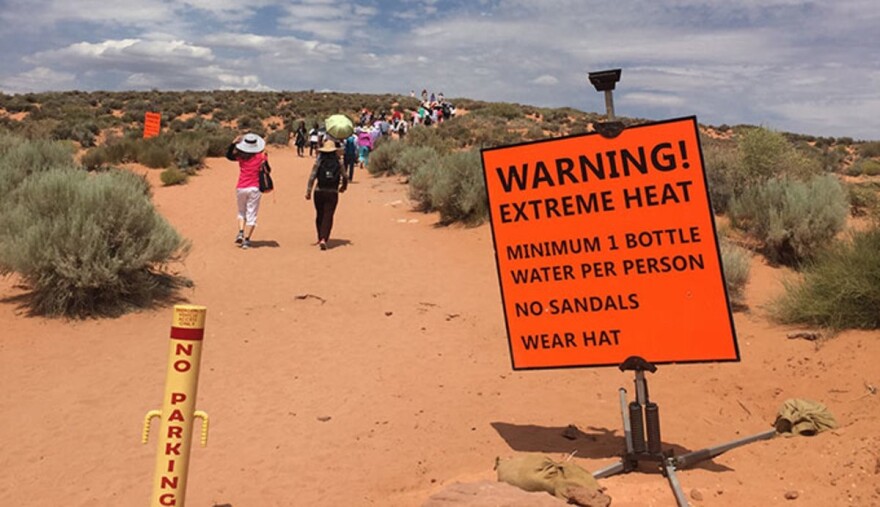An analysis by the Union of Concerned Scientists shows that two-thirds of national parks in the country are in counties that experienced at least one heat alert since the beginning of May. Some parks in the Southwest have been affected by heat alerts for more than 30 days. KNAU’s Melissa Sevigny spoke with climate scientist Astrid Caldas about the growing problem of extreme heat.
I think there’s a sense just from living here in Arizona and being outside this summer that it seems to be worse this summer, but does your data actually show that? Are we experiencing a particularly bad summer for heat?
Oh, yes, we are… There are a variety of records that are being broken that are related to extreme heat, and that is exactly what we had been expecting, and what we had been talking about, because extreme heat is one of the consequences of global warming and climate change that is best understood.
Obviously, this kind of extreme heat is a problem for everyone who lives in warm areas, particularly people who don’t have access to air conditioning, but since we’re talking about national parks, what are you concerned about specifically with people who are planning to visit or recreate in national parks?
The National Park Service is very good about putting our warnings for visitors to related to any and everything that can be a hazard… For extreme heat, for instance, at Death Valley, the alerts were: try not to be out there in the hottest part of the day, bring plenty of water, plan your trip, have plenty of fuel…. And most importantly, if you are in emergency out there, they might not be able to go out there to rescue you.
I don’t know common or widespread this was, but I saw some reports that in Death Valley that the news of the record-breaking high temperatures actually brought more tourists in who wanted to experience that. Do you think that’s going to be a major problem going forward, that kind of tourism, or do you think that’s kind of a fluke?
I think the kind of tourism that is happening now when people actually want to see and experience unique situations as they perceive it, is something that’s going to continue. It’s not just related to the heat, which is actually very dangerous, for you to try to make that into a social media post, posing with a thermometer at 135 degrees. It’s no joke, it’s your health, you don’t know what can happen…. So the extreme heat this year kind of turned into one of those appealing features of some parks, which is kind of crazy, come to think of it.
There’s plenty of things individuals can do to protect themselves for heat—drink lots of water, rest during the hottest part of the day, that sort of thing. I’m curious if you have ideas for maybe larger structural changes that need to happen, maybe local governments, state governments, the National Park Service. Are there things you’d like to see them do going forward to protect people from these heat events?
Local governments can definitely improve exposure to extreme heat through policies that improve shade, greenery, more trees…. However, the main thing we have to do, right, is to try to avoid extreme heat from happening. We want to avoid the worst of extreme heat in the future. The only way we can do that is of course by reducing our greenhouse gas emissions.
Astrid Caldas, thank you so much for speaking with me.
You’re very welcome.




